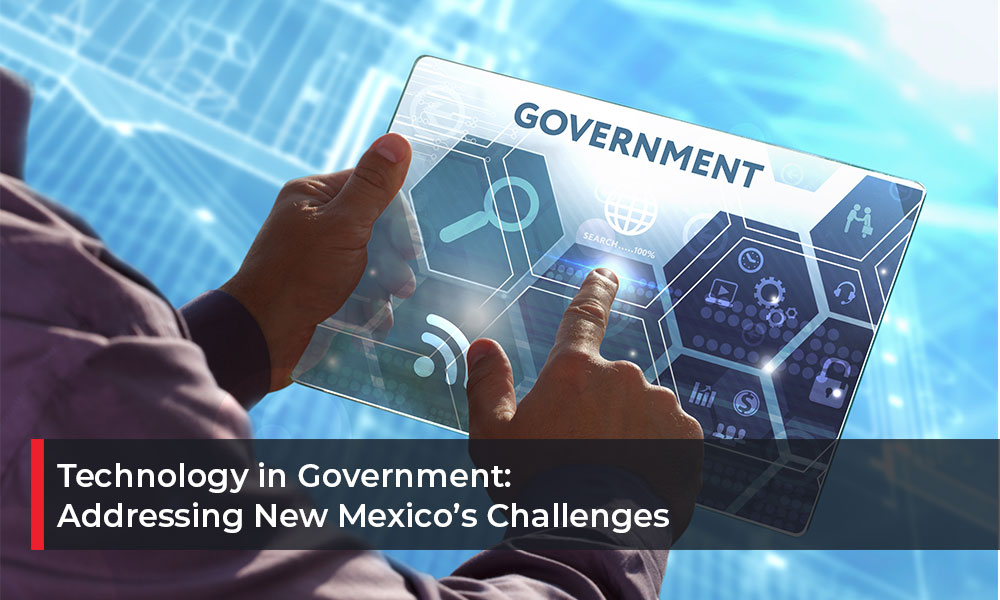When it comes to implementing new technology in government, New Mexico has a number of unique challenges to address. As a state whose capital is one of the country’s oldest cities, there are practical limitations to implementing high-tech solutions alongside old infrastructure.
As state CIO Darryl Ackley pointed out at the National Association of State Chief Information Officers’ Midyear Conference in Baltimore, digital convergence has to take place before major steps forward can take place. That means replacing ancient copper writing with modern optical infrastructure at a state-wide scale.
For a long time coming, government institutions have sought to consolidate their hardware assets and close data centers in favor of cloud services. Since his appointment in 2011, Ackley was instrumental in leading several large-scale modernization efforts.
These include upgrading the state’s human resources and capital management systems, and rebuilding the state’s public safety radio infrastructure. The primary order of business for his successor – Estevan Lujan as of August 2018 – will be seeing the state’s enterprise resource planning project through to completion.
But that doesn’t mean that New Mexico state institutions and government agencies need to wait for new infrastructure to consolidate their own technological needs and improve efficiency. In fact, there are numerous options available to government administrators right now.
Economies of Scale: Consolidate Technology in Government
When dealing with any of the processes that government institutions process on citizens’ behalf on a daily basis, there is a clear thread running through each challenge – economies of scale. Government institutions that take advantage of economies of scale by consolidating their technology solutions are able to better serve their citizens and save money doing so.
There are multiple ways that government agencies can do this. Some of these are simple, accessible, and require a minimum of oversight. Others are more complex, but nonetheless necessary for achieving optimal state functioning.
1. Managed Print Services for Government
Managed print services can help government institutions save significantly on their daily print output. The government print environment is not fundamentally different than that of a large enterprise – but the rules that govern the implementation of print efficiency solutions are very different.
This is why many government agencies neglect to implement cost-saving, efficiency-boosting managed print solutions with government contractors. Contractors like DSI can implement solutions for mitigating the risks of multifunction device security vulnerabilities, meeting government-mandated compliance guidelines in the process.
Because government network infrastructure is a common cybercrime target, managed print services providers need to be able to adhere to the NIST frameworks and be able to meet the needs that the framework demands of government agencies.
2. Sign Up for Single Sign-On with Login.Gov
One of the most helpful developments to occur in the world of technology in government is the single-sign on effort known as login.gov. User experience testing shows that the average citizen does not see a difference between various government institutions from an infrastructural point of view – the average citizen sees all government institutions as representing a singular, centralized platform.
The problem that these citizens face is that there is no singular, centralized infrastructure for meeting their needs. This leads to the situation where a single citizen often needs to sign into multiple different services in order to complete even the simplest administrative task.
Login.gov offers a shared service for managing login information for citizens across multiple government platforms. This ensures that individual users can sign into multiple government agencies with a single account – improving the user experience and making government cybersecurity easier to manage.
3. Consolidate Resources Without a One-Size-Fits-All Approach
Government agencies have long been directing their technology needs towards the private cloud, but even the most cloud-forward government agencies are finding compelling use cases for maintaining their own datacenters. The problem is that some agencies have inappropriately used a one-size-fits-all approach to cloud computing and data storage, leading to inefficiencies where economies of scale should be.
In many situations, there is a much higher security value to cloud-based data storage, but it depends on the capabilities of the cloud provider itself. Just as it is with hardware and software, certain providers offer better value than others, and government agencies need to address those unique attributes on a case-by-case basis.
Invest in Your Agency’s IT Infrastructure
While CIOs tend to move towards the cloud, it may be extremely expensive to pull mission critical data out of the cloud. This can lead to a case of vendor lock-in at the highest level – a situation no government agency wants to find itself in. Managed services can be key to maintaining control over mission critical on-premises IT assets without overspending on operation and maintenance.
Invest in cutting-edge government technology for your institution or agency. Contact DSI to find out how our team can help.

